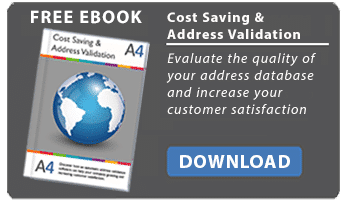
The check-out procedure of an ecommerce business is a crucial moment in a user’s shopping experience. It is at this stage that the person finalizes his efforts and buys what he wants: if something goes wrong, the most likely consequence is the abandonment of the procedure and the website. For those who sell, this abandonment turns into an economic loss at the moment and, in many cases, even in the future if we consider the additional purchases generated by a returning (loyal) customer. It is, therefore, very important to facilitate the data entry by the customer as well as the payment procedure: not all entrepreneurs pay due attention to this phase, which is the most important for getting profits from an online sales business. Forgetting to take care of the check-out phase and not make it intuitive, quick and usable from any device is a serious mistake that could compromise the outcome of an ecommerce business, despite having sufficient sales potential.
The experience in this sector teaches us that some best practices can improve the performance of a virtual store, whether small or large. If we set some priorities in the long list of measures necessary to improve the check-out phase, we can identify some interventions that should be implemented immediately. Hereinafter, we have selected five practices, all crucial for providing a modern user experience in line with the expectations of an audience who is more and more used to shopping online. So, what are these best practices? Let’s take a look at them one by one in detail, starting with the offer of alternative payment systems.
1) EXTENDING THE PAYMENT METHODS (EVEN IN INSTALLMENTS)
An excellent prerequisite for not betraying the good will of the potential customer during the check-out phase is to offer him several payment systems. By now, all ecommerce businesses offer different options, such as the bank transfer or the payment via PayPal, but not all of them are in step with the times, offering, for example, alternative and smart methods such as Satispay (i.e. a mobile app). In recent years, special software for paying the amount in installments have spread exponentially and now it is possible to pay in 2, 3, 4, 5 or more monthly installments. Among these systems, already available in Italy, we can bring up the following:
- Klarna
- Soisy
- Scalapay
- Smallpay
- Dilapay
- Findomestic
Some of these systems are well established, while others are still in development and have significant growth margins. Certainly, making them available in your ecommerce business at the time of check- out can make a big difference, especially if the products on sale have prices above 200-300 Euros. The costs for those who manage the ecommerce business are quite accessible and the installation is simplified by the plugins and APIs provided by each platform.
2) OFFERING THE OPPORTUNITY TO BUY AS A GUEST
In a world where everyone is on the run, filling out personal details as a buyer should take seconds. To speed up the procedure even more, some ecommerce businesses have introduced the variant of purchasing as a guest, that is, as an unregistered user. In this case, it is sufficient to enter only the name and email address, then the system will automatically send an e-mail to confirm the purchase and call up the possibility of registering. This is also something to keep in mind for those ecommerce businesses that sell digital products and are not bound to the actual shipment of goods (and therefore don’t need a postal address). In any case, it can help all online sales websites as well, as long as this does not cause confusion for a user who expects to enter his complete data (i.e. personal data and address).
Discover the free demo of the Address 4 software for your ecommerce!
3) PROVIDING A CLEAR RECAP OF THE ORDER
People who buy a product are quite careful about what they are paying for, especially if the amount is high. Therefore, to improve the checkout procedure, it is advisable to provide all the relevant information, from the list of products in the cart (with their relevant price) to the shipping address provided. These pieces of information are usually reported in sequence, but they must remain clearly visible and editable by the user. Indeed, it often happens that the buyer changes his mind during the procedure, before completing the checkout phase, for example because he sees the VAT and the modified amount, or because he realizes that he has entered incorrect data (we will see in the last point how to solve this inconvenience). Providing a clear summary is an effective way to improve the purchase process and prevent our customer from getting annoyed to the point that he abandons the order or stops adding other products to his cart.
4) CLEARLY SHOWING THE TERMS AND CONDITIONS OF USE
The terms and conditions of use of an ecommerce business should be clearly specified and the text should be given on a dedicated page. This is not only for legal reasons due to legal obligations to protect the consumer, but also for obvious reasons of transparency: in case of doubts at the very last moment, the user could search for information on the seller, such as the seller’s registered office, the methods of return or other. Furthermore, digital products and items that are subject to the minimum return period of 14 days should be accompanied in the checkout by a note similar to this:
I agree to lose the right of withdrawal as soon as I make the purchase
To process documents like these, including legal terms, it is advisable to consult a lawyer or specialized online platforms such as Lexdoit. This not only increases the chances of conversion, but, at the same time, it allows you to fulfill legal obligations as required in the digital environment.
5) GUARANTEEING THE CORRECT INSERTION OF THE ADDRESS
Finally, we come to the last point, the correct insertion of the address. What do we mean by this best practice? The answer seems obvious, but it is not. Many buyers, even regular ones, miss this step because they do not realize that they have omitted their house number, or they have written the wrong postal code, and so on. This applies to the shipping address, billing data or personal data if the purchase is carried out by a private individual. The problem that arises in these scenarios depends on the system used for data entry. The most popular hypotheses are two as follows:
– Manual data entry
If the data is entered manually without proper checks, the risk of having a wrong address or inaccurate data is quite probable. Indeed, the user, because of haste or distraction, may not realize that he has made a mistake, and it is not certain that the error will be discovered by those who manage the shipping service. The outcome could, therefore, be disastrous: the package won’t arrive, the delivery will be delayed, a customer will be dissatisfied or invoicing will have to be redone!
– Guided data entry
This second mode involves the assistance of a plugin or software using API functionality (or a virtual automatic system). The first advantage is that the insertion uses auto-completion, a function that is very similar to Google’s suggested searches: when the user types the first part of the address, the only possible alternatives are suggested directly in the form to be filled in, thus avoiding possible errors, discrepancies and omissions.
Whether the address has been entered with the assistance of Address4 or not, the Admin who uses our software can always choose to carry out a reclamation of his list of addresses and consequent geocoding to correct any errors and obtain the right geolocation. Accuracy is, therefore, combined with the flexibility of use in every business project.

CHECKING AND VALIDATING DATA WITH ADDRESS 4
If you are looking for a professional system to ensure foolproof customer data entry, Address 4 software is the solution for you. With Egon, you can integrate a checkout form for collecting each customer’s data in a safe and reliable way. Thanks to extensive coverage (over 250 countries worldwide), and thanks to real-time data correction and check features, Address 4 improves the sales rate of your online store, even if it manages significant volumes of orders every day. You can configure our software via plugins, with API or with the assistance of our technical team. Try the free demo to understand the potential of Address 4 in address validation and give your ecommerce business an edge!




